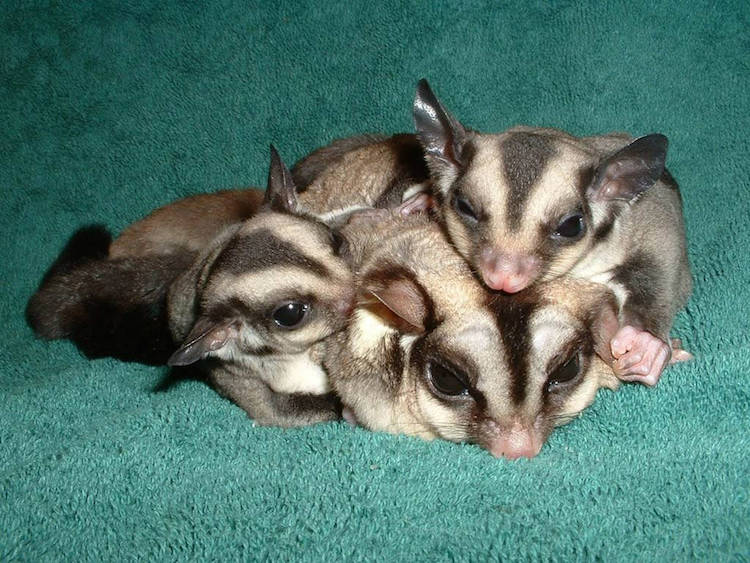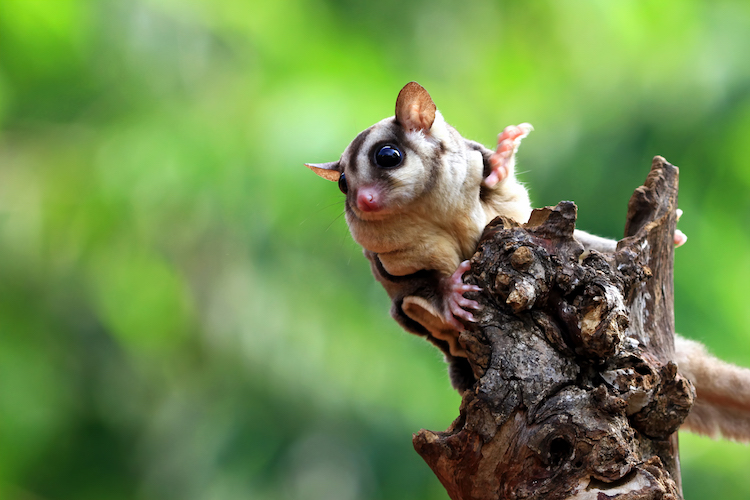What Is Sugar Glider Ick
Sugar gliders are popular for their unique vocalizations and soft fur. However, a syndrome known as “sugar glider ick” has been increasingly observed among these marsupials. This condition, more accurately described as a syndrome, is characterized by various symptoms, with the most noticeable change in the appearance of the sugar glider’s coat. The term “ick” is commonly used to refer to this syndrome due to the unpleasant and unsightly appearance of the affected fur.
Sugar glider ick syndrome manifests in several ways. Symptoms include diarrhea, loss of appetite (anorexia), discharge from the pouch, and, notably, a sticky texture, particularly on the sugar glider’s belly. This stickiness causes the fur to become matted and gives the sugar glider a disheveled appearance. If left untreated, anorexia can lead to the death of the sugar glider.
It’s important to note that sugar glider ick should not be confused with freshwater fish disease ich or ick.
What Causes Sugar Glider Ick
Research suggests that the primary instigator of sugar glider ick is a tiny protozoan organism known as Simplicomonas. This parasite resides within the intestinal tract of affected sugar gliders and is believed to be responsible for the occurrence of diarrhea and compromised coat quality. Typically, this condition is observed in juvenile sugar gliders, commonly referred to as joeys. Additionally, stress is considered a contributing factor in the development of this disease.
How to Diagnose Sugar Glider Ick

To diagnose sugar glider ick in a pet sugar glider, the examination of fecal matter is essential. Specialized testing, including fecal wet mounts and fecal PCR analysis, can be performed by an experienced exotics veterinarian or external laboratories to identify the presence of the parasite responsible. This allows for appropriate treatment to be administered. In the diagnostic process, symptoms exhibited by the pet sugar glider will be taken into account, as well as the assessment of sugar glider groups, considering that ick is highly contagious within colonies. However, it is important to note that various other diseases, such as mastitis, malnutrition, stress, septicemia, gastroenteritis, and failure to groom, may present symptoms resembling those of sugar glider ick. Therefore, a comprehensive evaluation is crucial. It is also worth noting that if one sugar glider is diagnosed with sugar glider ick, it is highly likely that the entire sugar glider family is affected by the condition.
How to Treat Sugar Glider Ick
The good news is that sugar glider ick can be successfully treated under the guidance of an exotics veterinarian. The treatment typically involves a comprehensive approach that includes administering medication to address diarrhea, eliminate the parasite, and prevent any secondary infections. This medication is usually administered orally for a period of 10-14 days. In addition to medication, subcutaneous fluid therapy (fluids injected under the skin) is often employed, along with probiotics and syringe feeding.
Can Sugar Glider Ick Be Cured
Sugar glider ick can be effectively cured if it is detected early and if the treatment plan recommended by the veterinarian is diligently followed by the pet sugar glider owner. It is crucial to provide proper medication, fluid therapy and assisted feeding to ensure the success of pet sugar gliders with this syndrome. Neglecting to syringe feed malnourished pet sugar gliders can lead to dehydration and ultimately result in their demise. Therefore, a comprehensive approach that includes medications, fluid therapy, and proper nutrition is vital for the recovery and well-being of pet sugar gliders affected by sugar glider ick.
Where Do Sugar Gliders Get Ick?

The exact source of the protozoan responsible for sugar glider ick remains uncertain. However, it is established that the disease is contagious and can spread from sugar glider to sugar glider. It is possible that some sugar gliders may act as carriers of the parasite without displaying symptoms themselves. It is important to exercise caution when handling sugar gliders from outside your own household, as this could potentially introduce the parasite to your pet sugar glider. Additionally, outdoor exposure poses a risk. To minimize the chances of transmission, it is advisable to always wash your hands thoroughly after handling your pet sugar glider or someone else’s, particularly if the sugar glider is from a pet store or breeder’s facility. It is also important to know the risks involved when allowing your pet sugar glider to walk on the ground outside.
Download the JoJo Pets app today for exclusive news and offers at https://jojo-pets.com/
